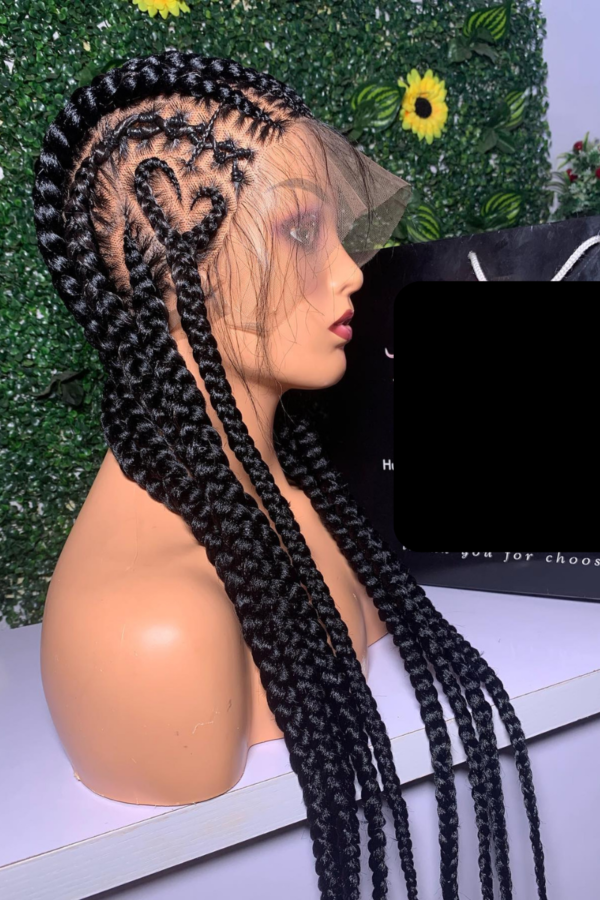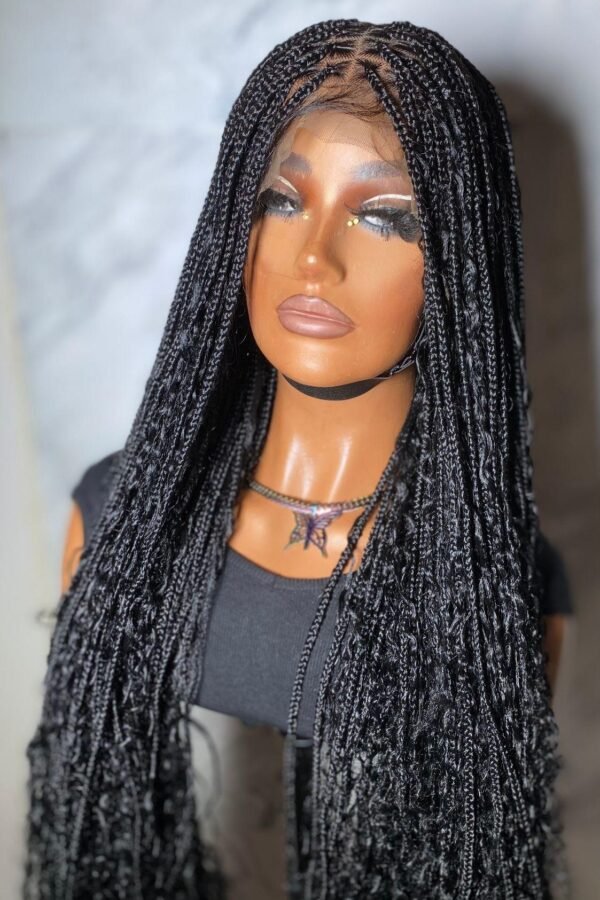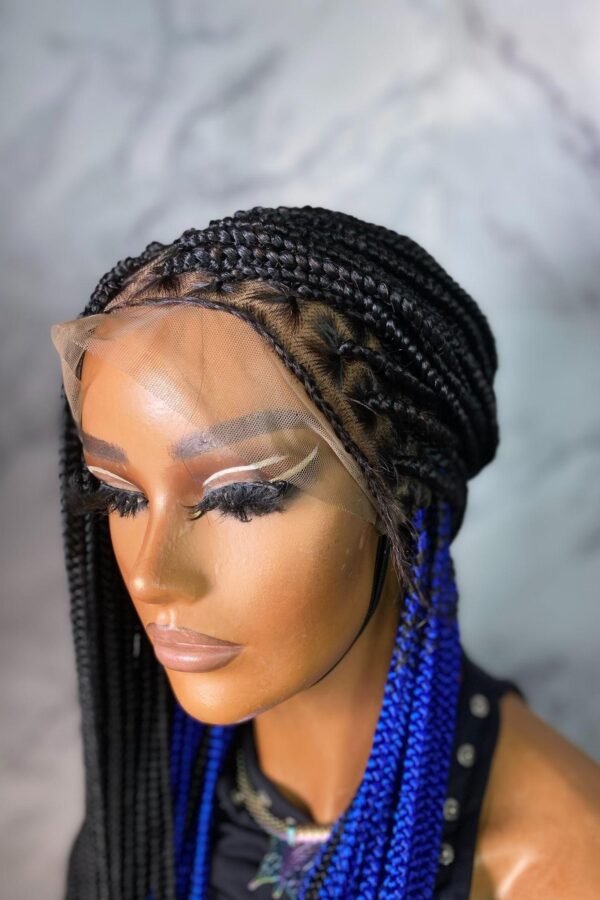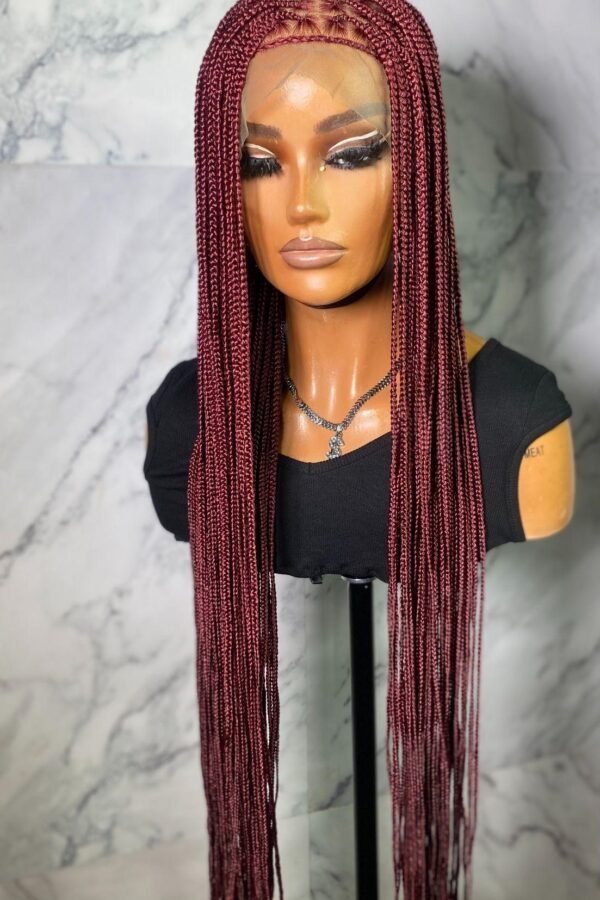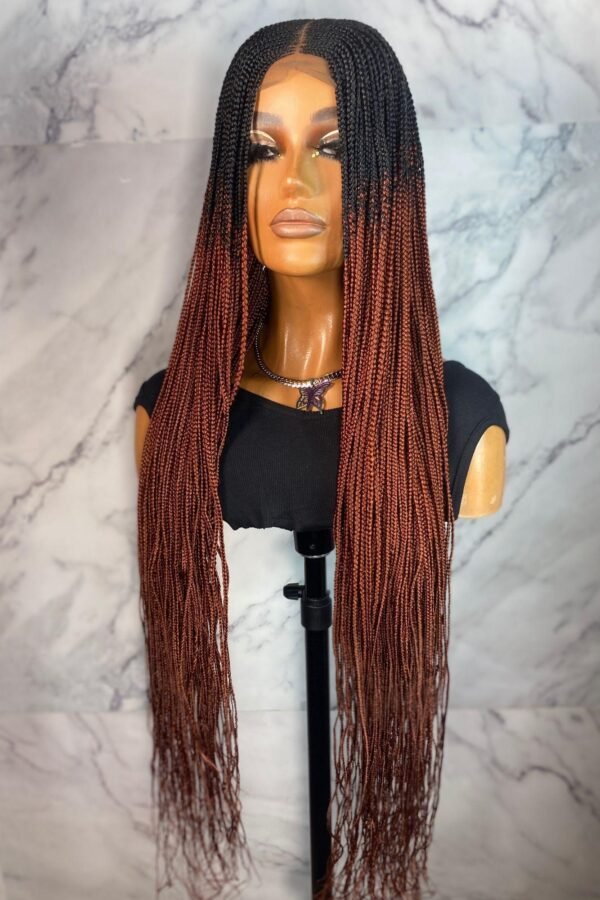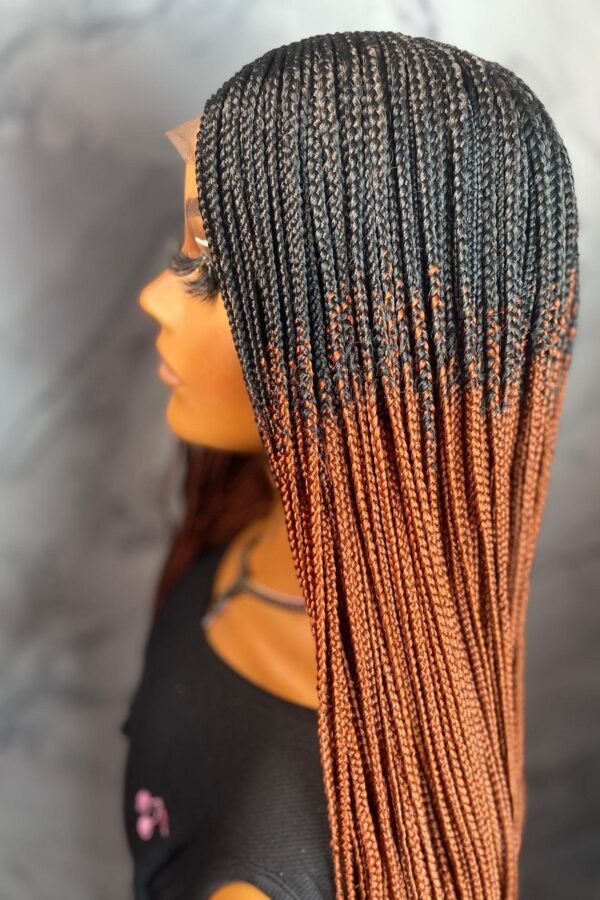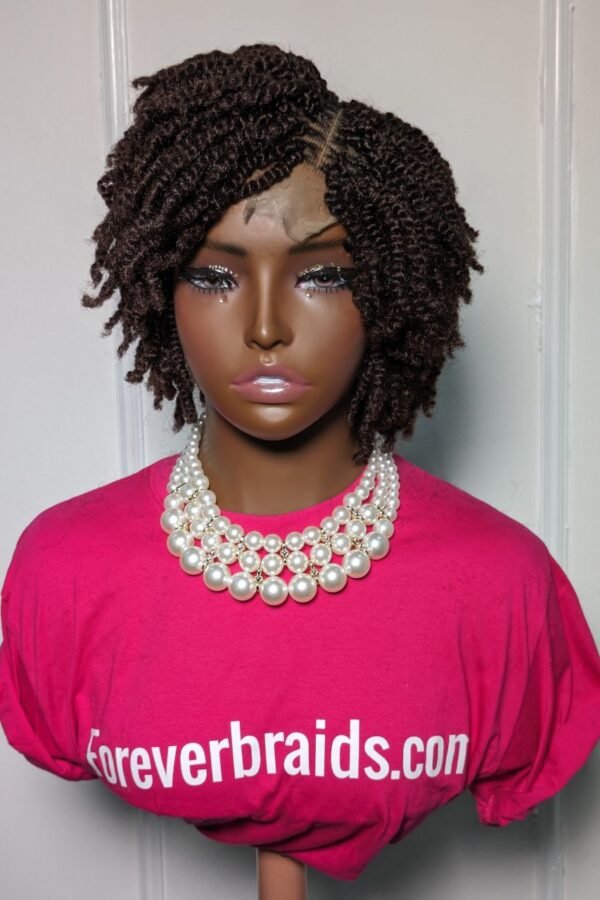African Braids
How to Hide Thin Edges with Braids
If you’ve ever lost hair at your temples, you know how challenging it is to grow it back. And how they may limit your options for hairstyles and, if caution is not exercised, may give rise to concerns with self-esteem. Although braids are a fantastic protective styling, pulling them off with thin edges can be difficult and cause anxiety.
Continue reading for preventative tips, the secret to regrowing the edges, and, most significantly, how to rock the braids!
One of two factors—genetics or persistent tension styling—can cause edges to narrow out. Aggressive styling, or anything that pulls your strands too tightly and too far from their natural fall, is something you can control even though you have no control over your genes.
When you wake up with a receding hairline that was once healthy and thriving after years of switching protective styles, it can be depressing, especially given that the re-growth process isn’t funny and most definitely won’t be an intriguing moment.
What Causes Thinning Edges?
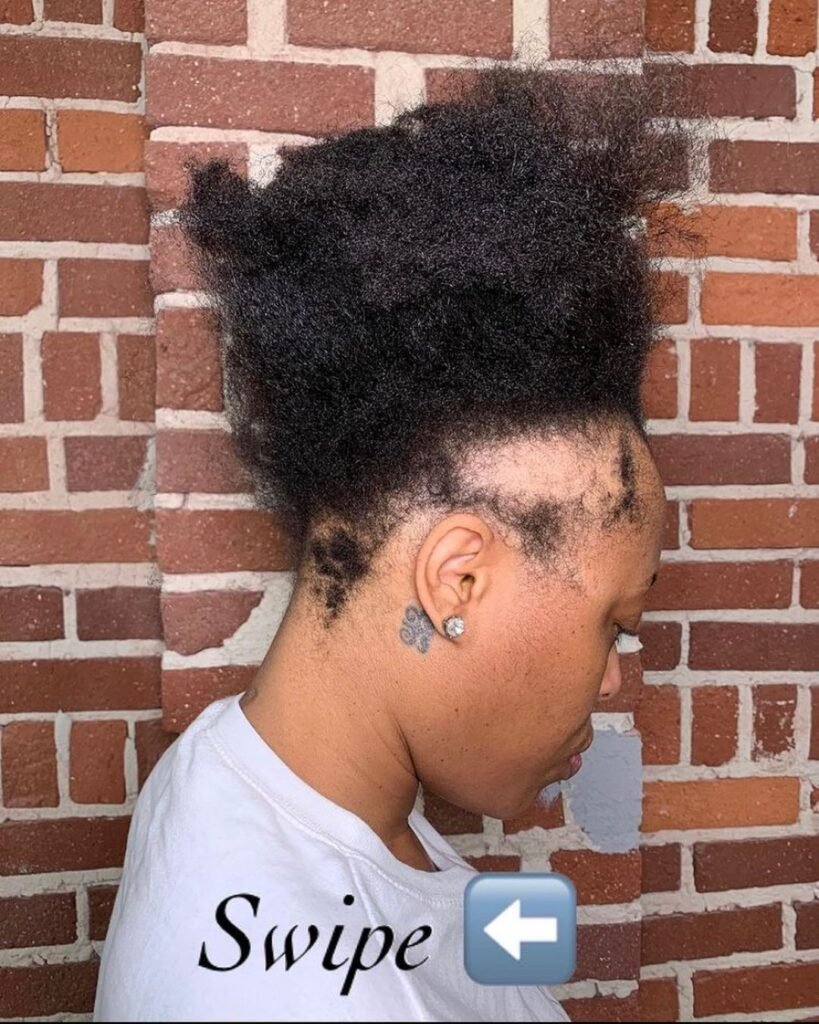
A receding hairline is caused by a variety of factors. Here are a few typical examples:
1. Genetics
Unfortunately, there are occasions when your genetic composition is all that matters and there is nothing you can do to change it. You should seek evaluation at a hair loss clinic if the area is extremely smooth, bald, with no follicles visible, and does not regrow. From there, therapy possibilities can be investigated.
2. Hormonal changes or medical conditions
Pregnancy, menopause, and even conditions such as diabetes can sometimes cause hair loss. While your body can regulate once hormones are back in balance, it’s always wise to consult a professional just to be sure.
2. Modifications in hormone levels or illnesses
Hair loss can occasionally be brought on by pregnancy, menopause, and even medical illnesses like diabetes. Even though once your hormones are in balance, your body can regulate itself, it’s always a good idea to speak with a professional just to be safe.
3. Excessive Manipulation and Over Styling
While we all like having excellent hair days and rocking fashionable hairdos like locs, braids, and twists, it’s important to occasionally take a break to give your hair a rest.
Not to mention that frequently changing up styles and updos puts too much strain on the hairline and edges, which could lead to edge thinning and traction alopecia, which is hair loss caused by too much stress on the scalp. The issue with decreasing edges is that growing them back requires a lot of effort.
Hot Products
How to Grow your Edges Back?
There may be some remedies you can use to restore your edges to their natural state if you’ve ruled out hormonal changes, illnesses, and heredity as the cause of your receding hairline:
1. Cut back on Tight and Slick Back Styles
Hair maintenance is a lifelong effort, I should add. If you have thinning edges or if you don’t want to be added to the list of people who have thinning edges. Limit tight hairstyles and slick backs, and stay away from braided and ponytail designs that could put too much strain on your hairline.
2. Prioritize your Hairs Health
Now is the moment to restart your hair’s top care regimen. Start by giving your hair a pre-poo treatment. Curly and coily hair girls especially need a pre-wash treatment because their hair is naturally textured and the hair oils have a hard time penetrating the hair shaft.
Adding several oils to a bowl and heating them is a common pre-poo technique known as the “hot oil treatment.” Following that, you apply it to your hair in parts, let it sit for 30 to 2 hours, and then wash your hair as usual.
Use a sulfate-free shampoo since it has a mild surfactant that is kinder to the scalp, then apply a moisturizing conditioner afterward. Finally, give the hair a thorough rinse after fully detangling by working in parts. Don’t forget to apply deep conditioning! Because it works better than a typical conditioner and provides the hair with all the moisture it needs, it is crucial to the health of the hair.
3. Vitamins and Veggies
By ingesting hair vitamins, and protein- and folate-rich supplements, you would be able to regrow your hair. The health of hair has been believed to be improved and efficiently boosted by biotin.
4. Keep Hair Oils in Handy!
Oils can enter the hair follicle to trap moisture by forming an oily film because they are emollient. Jojoba, almond, and argan oils are all fantastic options! To promote hair growth, include them in your hair care routine.
4. Avoid using Heat Tools
With a straightener or curling iron, it’s quite easy to remove the edges because they may be the thinnest hairs on your head. Until they are fully recovered, avoid using these tools. Use as little heat as you can to prevent further weakening. While we’re at it, you should also use combs and brushes with gentle bristles so as not to pull on your baby’s hair.
5. Go to Bed in a Silk or Satin Head Wrap!
The cotton bedding would quickly absorb the night care treatment due to the tossing and turning that occurred during the night. Put your hair in a satin or silk head wrap to keep it protected and well-cared for. Satin and silk give the hair a smooth, silky glide that minimizes frizz while also protecting the hair.
An Effective Way to Hide Thin Edges with Braids
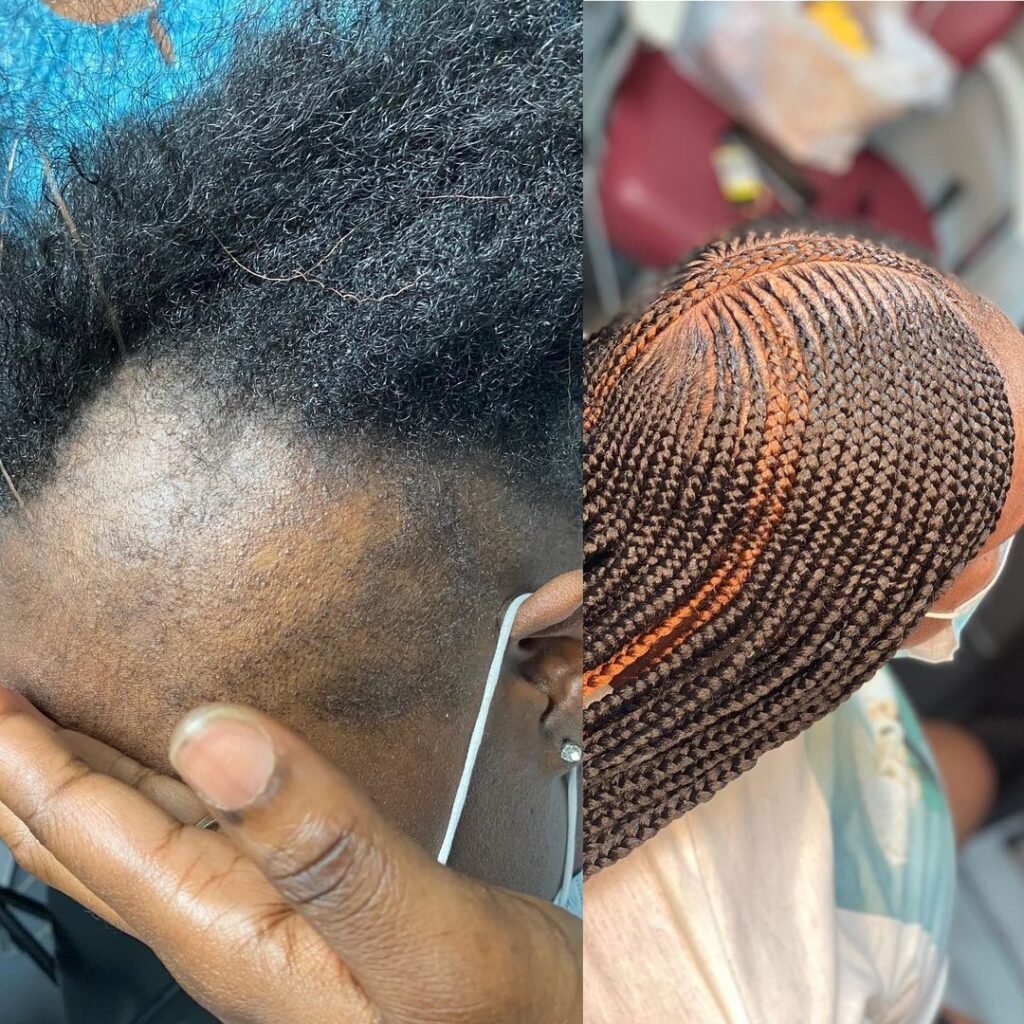
Unfortunately, especially for African American women, hair loss from tight box braids is all too common. According to dermatology, traction alopecia will affect more than one-third of African American women.
The term “traction alopecia” refers to hair loss brought on by pulling on the hair. Too-tight braids, buns, and ponytails can cause this hair loss. Small lumps on the scalp are the first traction alopecia symptoms to appear.
Hair begins to fall out and split off as the condition worsens. The hairlines or “edges” along the front or sides of the scalp are frequently severely impacted. In the most distressing situations, the hairline may recede and there may be scalp scarring.
How to braid with thin edges or traction alopecia? Section the hair first, add a lace frontal by hot combing it into position, applying hair adhesive at the hairline, then blow drying the hair to keep it in place. For a firmer hold, begin your braiding process at the back using the rubber band technique. This is especially helpful for beginners because it relieves scalp tension and remember to braid loosely and not too tightly.
Trim off the frontal lace and braid as usual. Another effective strategy is to leave your edges alone. Braid your hair while leaving the edges alone and give them a light oil brushing in the direction of the braids.
Conclusion
It can be frightening to deal with thin edges and traction alopecia, but you don’t have to face it alone. See a dermatologist to find out if the problem is genetic or to identify the underlying cause, which will provide you with the necessary information and guidance for treatment.
Don’t worry, then! You may restore your edges to their natural state and healthy growth by using the methods indicated, and don’t be afraid to braid them as well!


